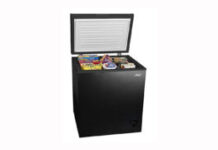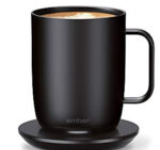Apple likely will be one of the first buyers of this new chip design
Intel today unveiled a new product family for its 8th Generation Core family that combines a 35-watt processor and AMD Radeon graphics chip on a single package to create a new class of gaming notebook.
It hasn’t been assigned a brand yet, as that will likely occur with a formal announcement at CES in January.
The announcement is important because it solidifies a partnership between competitors AMD AMD, +0.59% and Intel INTC, +1.37% for a product in a space in which both compete. And I’ll explain, below, how Apple AAPL, +0.03% might have been involved in the deal.
The stated goal for this new product was to address the pains of the growing and profitable gaming notebook market. Traditionally, machines built for this segment are big, bulky, thick and have poor battery life. This is in large part due to the combination of large discrete chips for both the processor and graphics, forcing bigger circuit board designs and more cooling requirements.
Kaby Lake-G, as it was called during development, will take a high performance H-series Intel processor, likely a quad-core product similar to what Intel released for the desktop this fall, and put it on the same design as an AMD-built semi-custom graphics chip, along with second-generation HBM (high-bandwidth memory) for the graphics to use.
AMD’s new customer
We don’t have details on the chip that AMD has built, but we do know that this falls into the semi-custom category that AMD has used to build products for Microsoft’s MSFT, +0.50% Xbox and Sony’s SNE, +2.37% PlayStation families. Unlike those designs, however, AMD is only supplying the graphics chip to Intel. It’s worth noting that both Intel and AMD are insistent that this is not a licensing deal of any kind; that Intel is simply becoming a customer of AMD’s semi-custom division.
With this release, Intel has a product with the ability to address the gaming notebook market without requiring OEMs to include other companies’ hardware. Ironically, Intel did have to reach outside its own engineering walls to make it happen, but the new product is completely owned by Intel. This should spark innovation in the gaming notebook space, giving us thinner, lighter and longer battery life options in 2018.
Big win
For AMD, this is a big win. It expands the company’s portfolio on the semi-custom division with a customer that could potentially sell millions of units. Intel is the largest chip provider for the notebook space, and though the gaming market is a small portion of that, new designs that offer thin-and-light options with gaming capability will boost it significantly. It also shows the value of AMD’s graphics IP, as even the company’s biggest rival was willing to use it for a new design.
The only company that might see some negative fallout from this announcement is Nvidia NVDA, +0.11% It has long benefited from the lack of Intel graphics performance by offering discrete graphics products to notebook manufacturers to supplement gaming capability. With Intel now able to offer a product solution to HP HPQ, -0.14% Dell, Lenovo and others that provide equal levels of performance, tighter integration and a single vendor relationship, the GeForce line could see a regression in the mainstream gaming notebook market.



















